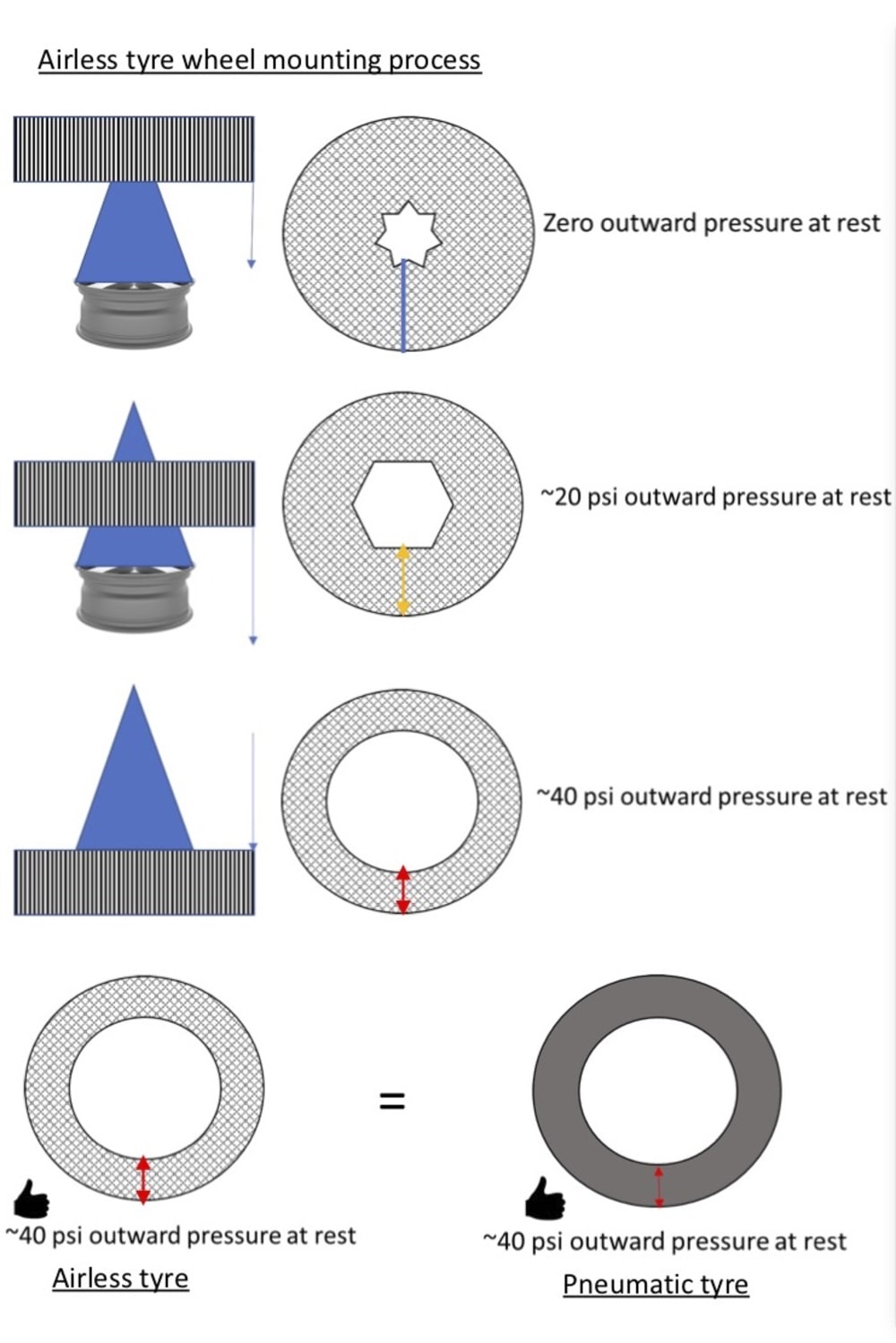Why airless tires currently don’t work for road going vehicles and how to fix it.
I believe because the fundamental principle that makes pneumatic tires so effective has been forgotten which is the constant outward force the air pressure inside provides. A pneumatic tire at rest has a constant outward pressure of about ~40psi that resists deformation to the tire and prevents damage to the wheel.
An airless tire at rest provides zero outward pressure or resistance to deformation making it susceptible to deformation under light load and damage to the wheel.
In order to make an airless tire work like a pneumatic tire, the airless tire at rest must provide an equal outward pressure to that of the pneumatic tire. This way when the airless tire is under load of a vehicle with i.e. a rock under the tire or cornering at speed the tire won't deform tragically like a zero outward pressure airless tire.
Another major issue with a conventional airless tire is the speed limit at which they can operate safely. This is due to zero outward pressure at rest lacks the ability to steady the tire in balance around the wheel at speed causing the airless tire to become unbalanced and fail. An airless tire with constant outward pressure at rest equal to that of a counterpart pneumatic tire will have the ability to steady the tire in balance around the wheel.
For an airless tire to achieve constant outward pressure at rest, the way in which the airless tire is designed needs to be reconsidered. Instead of being produced at the desired external and internal radius with wheel attached, the airless tire will need to be designed with the desired external radius but with an internal radius much smaller than desired absent of an attached wheel.
The fitment process of pressing the airless tire onto the rim by expanding its center over a specially shaped cone aligned to the fold groves of the tire increases the outward pressure of the tire due to the resistance to deformation of its internal structure. Once the airless tire is stretched to the desired radius by the cone, the airless tire will fit onto a standard required size wheel holding it self in place like a conventual pneumatic tire. No need for bolts and clamps to hold it in place on a wheel like a conventual airless tire. A simple standard tire balance will see the airless tire run true and conventional.
A benefit of this is the outward pressure of the airless tire can be varied across its tread surface; i.e., the outside of the tire has firm internal structures progressively reducing firmness to the inside of the tire making a more effective all terrain tire, firm on the outside for on road cornering and soft on the inside for loose surfaces and sand.
Like this entry?
-
About the Entrant
- Name:Saul Wiseman
- Type of entry:individual
- Software used for this entry:PowerPoint
- Patent status:none





